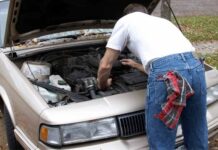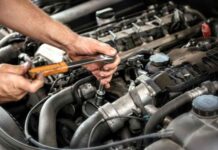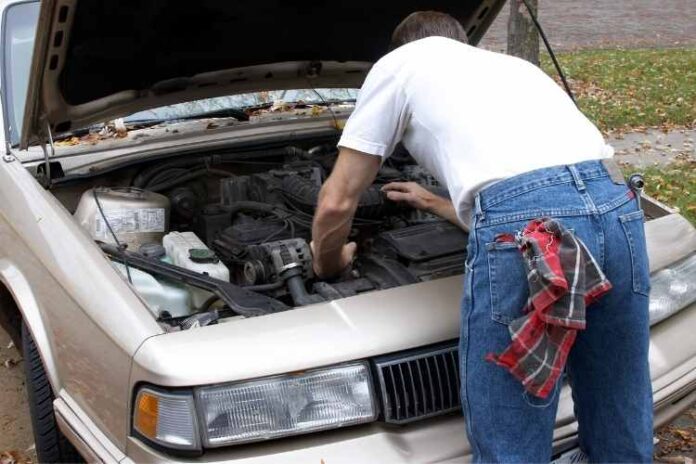Are you a driver whose car is beginning to act up? Are you feeling helpless when your car malfunctions?
It would be best if you learned car maintenance tips to prevent broken parts or engine breakdowns. It can help you learn how to keep your car free of glitches. With proper care and maintenance, your vehicle will keep running smoothly.
Here are some maintenance tips for drivers who aspire for a long and reliable car life. Read on to learn more about driving maintenance.
1. Read the Owner’s Manual
Car maintenance is something that every driver should take seriously. Proper vehicle car maintenance can extend its life and avoid costly repairs.
One of the best ways to keep your car in good shape is to read the owner’s manual. This document contains valuable information about your vehicle, including how to maintain it properly.
You can learn about your car’s maintenance needs by reading your owner’s manual. For example, you may find out how often to change the oil or what type of oil to use.
You can also learn about other essential maintenance tasks, such as checking the tire pressure and replacing the air filter.
2. Check Engine Coolant
A car’s engine coolant is vital to keeping the engine running smoothly and from overheating. Check the coolant regularly to ensure that it is clean and at the correct level and that there are no leaks.
It is also important to flush and replace the coolant every few years to prevent corrosion and build-up.
3. Check Battery Charging and Liquid Level
One of the most important things to do regarding car maintenance is to check the battery charging and liquid level regularly, as it can help prevent significant problems. If the battery is not charging correctly, it can slowly lose its power and eventually die.
If the liquid level is too low, the battery will not be able to function correctly. By checking these things regularly, you can help to keep your car running smoothly and avoid costly repairs.
4. Check and Change Oil Regularly
Your car’s oil is its lifeblood. Over time, oil breaks down and becomes less effective at lubricating and protecting your engine. Regular checking and changing your oil is one of the most important things you can do to maintain your car.
It can lead to increased wear and tear and eventually engine failure.
To avoid this, check your oil change level at least once a month and change it every 3,000 miles. You can do this yourself or take it to a reputable shop. Either way, use the correct oil for your car and dispose of the old oil properly.
5. Check All Lights
It is essential to check all the lights on your car regularly, including headlights, taillights, brake lights, and turn signals. If these lights are not working, it could be a safety issue. You don’t want to get pulled over for having a burnt-out taillight!
You also don’t want to get into an accident because you didn’t signal your turn. Checking your lights is a simple and easy way to help ensure your safety on the road. Replace that burnt-out as soon as possible.
6. Check And Replace Worn Out Wiper Blades
Maintain your windshield wipers in good working condition; it is essential to check and replace them regularly.
To inspect your wipers, examine the rubber blades for cracks, tears, or other damage. Worn-out wipers can decrease your visibility while driving and cause streaks and smears on your windshield.
Keeping your windshield wipers in good condition is essential for your safety on the road. If you notice any damage, it is best to replace the blades. Many hardware and auto stores sell replacement wiper blades, which are relatively easy to install.
Check and replace them regularly to ensure optimal visibility while driving.
7. Check Tires and Rotate Regularly
Inspect your tires regularly for tread wear and proper inflation. Replace tires when they become worn or damaged. Rotate your tires every 5,000 to 8,000 miles to help them wear evenly.
Most vehicle maintenance tips focus on the engine, but the tires are the essential parts of your vehicle car. Tires keep you moving; if they’re not in good shape, you’re not going anywhere. That’s why regular checking of your tires and rotating them is essential.
Tires can lose air pressure over time, leading to a blowout. Regularly checking the pressure and inflating them as needed will help extend their life. Regularly rotating them will help ensure even wear, so they last longer.
8. Check and Replace Worn Down Brake Pads
It is essential to check and replace your brake pads regularly. Brake pads should replace when they show signs of wear, such as thinning, cracking, or excessive squealing.
Worn-down brake pads can lead to poor braking performance and increased stopping distance. If you are unsure how to replace your brake pads, consult a professional.
9. Check Hoses and Belts
Check hoses and belts monthly for cracks or fraying and replace them as needed. These are vital components of your car’s engine and can often be the first things to fail. It can cause the engine to overheat or the battery to drain.
Hoses are soft rubber; over time, they will get hard and cracked. The hoses should handle firm, not squishy. You can test the hoses by feeling them while the car is running. If you notice any cracks, leaks, or fraying, be sure to replace them as soon as possible.
10. Check Filters
Most people know they should change their car’s oil every few months, but not everyone knows that they should also check and change their filters regularly.
Filters for your car’s engine, air conditioner, and cabin air filter should all be changed at least once a year and more often if you live in a dusty area.
Engine and air filters are relatively easy to change yourself, but you’ll need to take your car to a mechanic to change the cabin air filter. Keeping your filters clean will help your vehicle run more efficiently and extend its lifespan.
11. Check Spark Plugs
A spark plug is a small device that helps deliver electrical current to the engine. Depending on your car, you may need to do this every 30,000 miles. You can check your owner’s manual to be sure.
Over time, they can become fouled or damaged, which can cause engine misfires and poor performance. If you’re experiencing either of these issues, it’s time to check your spark plugs.
12. Check for Warning Light in the Dashboard
The most common warning light is the check engine light. This light can come on for various reasons, but it usually indicates a problem with the engine. If this light comes on, you should take the car to a mechanic to have it checked out.
Another standard warning light is the oil pressure light. This light comes on when the oil pressure in the engine is low. Various things can cause this, but it usually indicates that the oil needs to be changed.
You should pull over and check the oil level if this light comes on. If it’s low, add oil and continue on your way.
The last standard warning light is the coolant temperature light. This light comes on when the engine is running too hot. Various things can cause this, but it usually indicates that the coolant needs to be changed. If this light comes on, you should pull over.
And in case you need quality replacement spare parts for your car, check this to learn more about OEM accessories.
13. Check Under Chassis and Suspensions
Regularly checking under your car’s chassis and suspension ensures proper handling and driving control. Look for signs of rust or corrosion and have any affected areas repaired as soon as possible.
Check for leaks in the steering, suspension, and braking systems. This simple tip can help keep your car’s undercarriage in good condition and ensure a smooth ride.
14. Wax Your Car
Regularly waxing your car is essential to protect the paint and keep it looking shiny. You can do it at home with a kit or take it to a professional.
It’s necessary to read the instructions carefully before you begin and ensure you’re using the right kind of wax for your car’s finish. You’ll also need to give the wax time to dry before you buff it off.
Contaminants such as dust, sand, and salt can build up, and environmental factors like ozone and ultraviolet light can cause damage. Still, waxing can help minimize this by forming a protective seal to extend the quality of paint.
Car Maintenance Tips to Keep Your Car in Top Condition
Although it may be tempting to skip an oil change or delay getting new tires, it is essential to remember that your car is a crucial part of your daily life.
Make sure you maintain regular car maintenance tips to avoid expensive repairs down the road. Following these simple tips, you can keep your car running smoothly for years. If you would like to know more about regional towing please visit NRC Group.
Did you find this article helpful? Check out the rest of our blog for more!


























